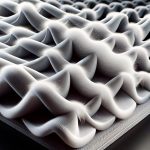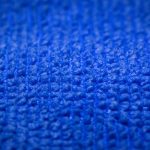Tossing and turning at night due to damp, uncomfortable sheets is a frustrating experience. To master the art of fabric care and prevent this annoyance, you need effective strategies.
By implementing 5 simple techniques, you can ensure your sheets remain dry and cozy.
- Proper ventilation: Ensure that your sleep environment has proper air circulation. Open windows or use fans to allow fresh air to circulate and prevent moisture buildup.
- Moisture-wicking fabrics: Invest in sheets made from moisture-wicking materials such as bamboo or microfiber. These fabrics are designed to absorb and evaporate moisture quickly, keeping you dry throughout the night.
- Humidity control: Use a dehumidifier in your bedroom to regulate the moisture levels. Excess humidity can lead to damp sheets, so keeping the humidity levels in check is essential.
- Regular maintenance: Wash your sheets regularly to remove any accumulated sweat or moisture. Follow the care instructions on the label and use a gentle detergent to maintain the quality of the fabric.
- Protective mattress solutions: Consider using a mattress protector or waterproof cover to safeguard your mattress from spills, accidents, and sweat. These protectors can help prevent moisture from seeping into your sheets.
With these fabric care tips, you can maintain a comfortable and peaceful sleep environment, free from the discomfort of damp sheets.
Key Takeaways
- Ensure proper air circulation in the sleep environment
- Invest in sheets made from moisture-wicking materials like bamboo or microfiber
- Utilize dehumidifiers to reduce moisture in the air
- Wash sheets regularly to remove accumulated sweat and moisture
Proper Ventilation for Drying
Make sure you place your sheets in a well-ventilated area to help them dry effectively and prevent dampness. Proper air circulation is crucial in drying your sheets efficiently.
When drying your sheets, consider using drying techniques that maximize air circulation. Hanging your sheets on a clothesline outdoors is an excellent way to ensure optimal air circulation. If outdoor drying isn't feasible, using a drying rack indoors near an open window or using a fan to improve air circulation can also be effective.
Additionally, shaking out the sheets before hanging them will help to increase airflow and prevent moisture from becoming trapped in the fabric. Another useful tip is to avoid overcrowding the drying area, as this can hinder air circulation and prolong the drying process.
Use Moisture-Wicking Fabrics
To effectively prevent dampness in your sheets, consider using moisture-wicking fabrics that can help manage moisture and promote faster drying. Fabric selection plays a crucial role in keeping your sheets dry and comfortable. Look for bedding technology that incorporates moisture-wicking properties, such as microfiber, bamboo, or performance blends.
These fabrics are designed to draw moisture away from your body and the surface of the sheets, allowing it to evaporate more quickly. By using moisture-wicking fabrics, you can minimize the accumulation of moisture in your sheets, reducing the likelihood of dampness and mildew.
When choosing moisture-wicking fabrics for your sheets, pay attention to the thread count and weave. Fabrics with a slightly looser weave and lower thread count tend to breathe better and allow for improved airflow, aiding in the evaporation of moisture. Additionally, consider the specific weave patterns used in moisture-wicking fabrics, as these can impact the fabric's ability to wick away moisture effectively.
Incorporating moisture-wicking fabrics into your bedding can greatly contribute to keeping your sheets dry and comfortable, enhancing your overall sleeping experience.
Address Room Humidity Levels
Consider adjusting for room humidity levels to further prevent damp sheets, by utilizing dehumidifiers and proper ventilation. Dehumidifiers can be highly effective in reducing moisture in the air, thus preventing dampness in your sheets. When choosing a dehumidifier, consider the size of the room and the level of humidity. Look for models with adjustable settings to control the level of moisture in the air. Additionally, ensure that your room is well-ventilated to allow for proper air circulation. Opening windows and using fans can help in this regard.
Humidity control is essential for preventing damp sheets. Aim to keep the humidity level in your room between 30-50%. This range is optimal for comfort and prevents excessive moisture that can lead to damp bedding. Use a hygrometer to measure the humidity in your room and make adjustments as needed. Remember that high humidity levels not only affect your sheets but can also promote the growth of mold and mildew.
Regular Sheet Maintenance
Addressing regular sheet maintenance involves washing, drying, and storing your sheets correctly to prevent dampness and maintain their quality.
When washing your sheets, consider using fabric softener alternatives such as wool dryer balls or white vinegar, as traditional fabric softeners can reduce the absorbency of the sheets and contribute to dampness. Additionally, opt for a quick stain removal strategy by promptly treating any stains before washing. This will prevent the stains from setting and lingering, which can lead to musty odors and dampness.
Ensure that your sheets are thoroughly dried before storing them by using the appropriate dryer settings or air-drying them outside if possible. Properly storing your sheets in a cool, dry place, such as a linen closet, can also help prevent dampness.
Protective Mattress and Mattress Pad
Ensure your mattress and mattress pad provide a protective barrier against moisture to prevent damp sheets. Look for a mattress pad that offers a waterproof barrier to shield your mattress from any liquid spills or accidents. A waterproof mattress pad acts as the first line of defense against moisture, preventing it from seeping into the mattress and causing dampness.
Additionally, opt for mattress pads made from breathable materials such as cotton or bamboo. These materials allow for air circulation, reducing the likelihood of moisture buildup and enhancing comfort while sleeping.
When choosing a mattress, consider one with built-in moisture resistance or add a waterproof mattress protector for an extra layer of defense. This won't only protect your mattress from moisture but will also contribute to maintaining a hygienic sleeping environment.
Frequently Asked Questions
Can Using a Dehumidifier Help Prevent Damp Sheets?
Using a dehumidifier can help prevent damp sheets by reducing moisture in the air. It's effective but may not address underlying issues. Alternatives like proper ventilation and moisture-absorbing products can also help.
Are There Any Specific Laundry Detergents or Fabric Softeners That Can Help Prevent Dampness in Sheets?
Yes, specific laundry detergents and fabric softeners with moisture-wicking properties can help prevent dampness in sheets. Essential oils, homemade fabric sprays, and natural remedies like vinegar can also aid in keeping sheets dry.
What Are Some Tips for Preventing Damp Sheets in a Humid Climate?
To prevent damp sheets in a humid climate, choose breathable bedding materials like cotton or linen. Ensure good air circulation in your bedroom by using a fan or opening windows. These steps can help keep your sheets dry and comfortable.
Can Hanging Sheets Outside to Dry Help Prevent Dampness, or Does It Make It Worse?
Hanging sheets outside to air dry can help prevent dampness by allowing moisture to evaporate. It's a great way to control moisture and keep your sheets fresh. Just make sure to bring them in before it rains.
Are There Any Natural Remedies or DIY Solutions for Preventing Damp Sheets, Such as Using Essential Oils or Homemade Fabric Sprays?
To prevent damp sheets, consider homemade remedies like using essential oil solutions or homemade fabric sprays. These natural options can help keep your sheets dry and fresh, without the use of harsh chemicals or artificial fragrances.
- How Does Ring Spun Cotton Affect Garment Fit and Shape Retention? - August 13, 2024
- What Are the Challenges in Producing Ring Spun Cotton? - August 13, 2024
- Is Ring Spun Cotton Suitable for Plus-Size Clothing? - August 13, 2024






